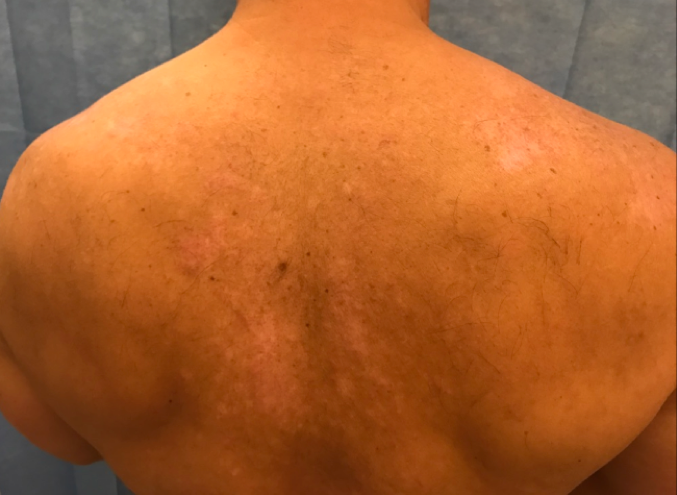Cutaneous Lupus Erythematosus: Why we study skin
Wednesday, April 10, 2019
|

Did you know that 80% of patients with Systemic Lupus Erythematosus (SLE, multiple organs) have skin involvement, but only 10-20% of Cutaneous Lupus Erythematosus (CLE, skin) patients are at risk of developing lupus?
This is one of the reasons why we chose to study the skin in lupus. We hope to identify risk factors in CLE patients that predict whether they will develop SLE, which can help physicians decide how aggressively to treat their disease. We also hope we might find new treatments for both SLE and CLE along the way.
An interesting aspect of skin lupus is that there are many different clinical subtypes of CLE. One of the more common types is called Discoid Lupus (DLE), which is characterized by scarring hair loss. Another type is called Subacute Cutaneous Lupus (SCLE), which is often triggered by sun exposure. Typically, patients with SLE develop what is known as a malar rash, which covers the cheeks and nose like a butterfly (which is often used by lupus societies as a symbol for their cause). Lupus can look a lot like psoriasis (annular), pimples (papulosquamous), or can even resemble frost bite (chilblain lupus).
The crazy thing is, even though these rashes vary in appearance, location, color, and depth, many of them look the same in a biopsy. Pathologists often rely on clinical features to diagnose CLE patients, because the immune cells that enter the skin often go to the same place: right in between the outer and inner layers of the skin in a pattern called "interface dermatitis". Therefore, we think (or hypothesize, as researchers like to say) that similar signals tell the immune system to enter the skin during lupus, and that blocking these signals may lead to development of new treatments.
Better diagnostics, better prognostics and new treatments are our goals!
Photo: Discoid lupus on the back; Credit: Drs. Maggi Ahmed & John Harris